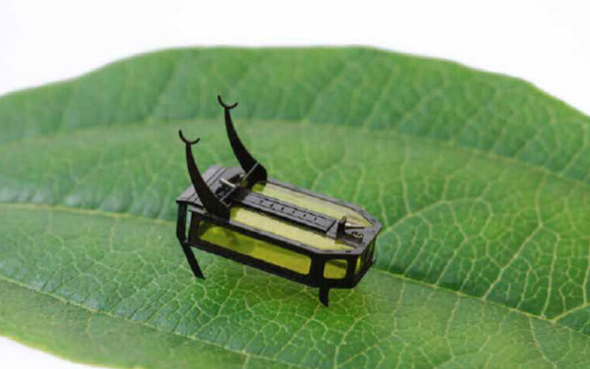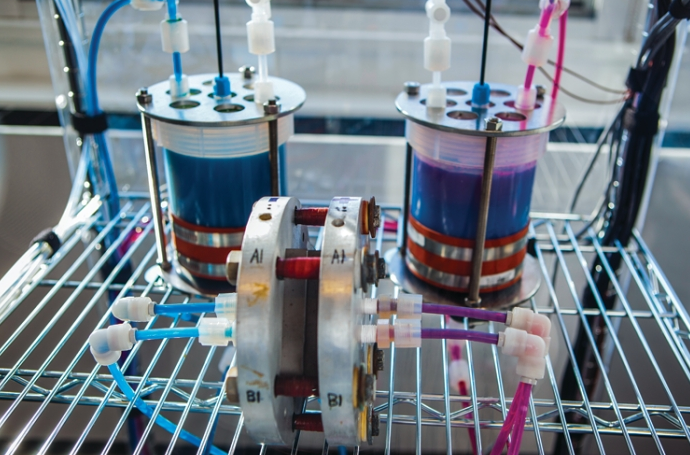Does methanol give a robot beetle freedom?

A robot beetle goes the distance on its own thanks to a methanol-fueled micro muscle. Scientists envision that swarms of robotic insects could help in search-and-rescue operations, but confined spaces are out of reach for robots that must be connected to a power source. The new bot carries its liquid fuel inside its body.
The team of scientists at the University of Southern California in Los Angeles chose methanol because, at a given mass, it contains 10 times more energy than tiny batteries. To convert methanol into motion, the researchers coated a nickel-titanium alloy wire with platinum; the alloy contracts like a muscle when heated and stretches once cooled. Platinum generates heat by burning any methanol vapor that comes into contact with it, by varying the exposure to the fuel in a periodic pattern, the temperature varies, and micromuscular accordions, that movement causes the bot’s front legs to lift, when the legs bend back again, the body creeps forward.

Excluding fuel, the beetle robot weighs about three grains of rice, on a par with living insects, and crawls on flat surfaces while carrying up to 2.6 times its weight. It tackles steeper inclines than the toughest treadmill setting, and it can run for over an hour. With a battery, even one of the latest generation, it would work for a few seconds at best, it is estimated.
There is room for improvement: the beetle is slower than comparable robots and cannot be steered. Next-generation prototypes will use the same artificial muscle principle with a faster, more maneuverable design and different fuel. and what do you think?





Responses